View/Download this article in PDF format.
The United States Enrichment Corporation (USEC) was established in 1992 as a wholly-owned federal entity until it was privatized in 1998. Over the last five years, USEC has experienced massive financial troubles; its stock has dropped sharply, and it has become increasingly reliant on taxpayer subsidies to stay afloat. Below is a brief summary of USEC’s troubles and its recent taxpayer support.
Background and Financial Outlook
USEC was originally established in 1992 to replace the Uranium Enrichment Enterprise (UEE) and restart the Department of Energy’s efforts to commercialize gas centrifuge technology. Today, USEC has two principal concerns:
- Construction and operation of its American Centrifuge Project in Portsmouth, OH. The project’s goal is to prove the commercial viability of gas centrifuge technology.
- Operation of the Paducah Gaseous Diffusion Plant in Paducah, KY. This plant has provided uranium enrichment services for more than 60 years, but it recently announced it will close its doors in May 2013, when the federal government will start the process of taking back control of the plant.[ii]
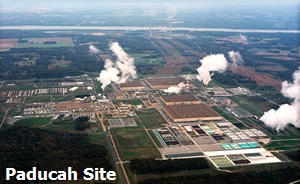
USEC has repeatedly faced the threat of delisting from the New York Stock Exchange (NYSE). USEC’s stock value fell to less than $1 on multiple occasions since 2011, prompting the first delisting notice from the NYSE. Unless the company could maintain a minimum average of $1 over a 30-day period its stock would be delisted. At its annual stockholder meeting on June 27, USEC management received approval by its shareholders to implement a reverse stock split (i.e. artificially raising share prices by reducing the amount of outstanding shares) in order to keep company stock above $1. In August, USEC received notice from the NYSE that it had regained compliance with the minimum listing standard.
In April, USEC received a second delisting notice due to its low market capitalization, or company value, which fell below $15 million for several days in July. NYSE regulations require USEC’s total value to at least $50 million or above over any 30-day period. Shortly after, USEC notified the NYSE that it intends to “cure this deficiency.” In August, the NYSE agreed to USEC’s proposed plan to regain compliance with the NYSE’s minimum company value standard. The plan requires USEC to meet specific technical and financial milestones by financial quarter over the next 18 months. If USEC does not meet these milestones, the NYSE will suspend USEC’s ability to trade shares. Failure to come back into compliance with the minimum company value standard will force USEC to be delisted from the NYSE. Following a delisting, USEC would likely be forced to repurchase all outstanding shares which currently total $530 million, yet USEC states it “does not have adequate cash to repurchase the notes.”
USEC faces additional challenges. Both of its primary enrichment service contracts are coming to an end this year. First is a 20-year ‘Megatons-to-Megawatts’ contract with Russia’s state-owned Techsnabexport (TENEX) under a 1993 intergovernmental nonproliferation agreement. USEC signed second 10-year contract with TENEX, but it will make up only half of the previous contract amounts. USEC’s second main contract to expire is with the federally-owned Tennessee Valley Authority and Energy Northwest; it ends later this month. Finally, USEC has been in discussions with DOE about handing back operations of the federally-owned Paducah site earlier than expected. The lease is currently set to expire in 2016, but according to company documents, USEC expects the de-leasing process to be finalized in 2014. Operating since 1952, USEC’s Paducah gaseous diffusion plant is widely-known to require substantially more power to enrich uranium than its competitors.
The American Centrifuge Project
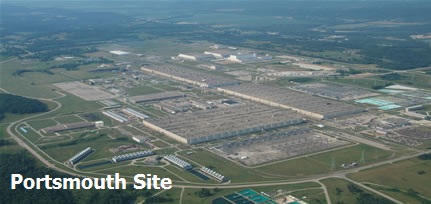
In 2002, USEC announced it had chosen the 300-acre Portsmouth site in Piketon, Ohio as the site for its American Centrifuge Plant. Initial capital costs for the project were estimated at $1.7 billion, with the first commercial operation date expected in 2005. DOE assumed three years worth of depleted uranium liabilities (see below) valued at approximately $21 million in order to free up funds for USEC to invest in research and development. Three years later, USEC announced capital costs for the plant had risen from $1.7 to $2.3 billion and the commercial operation date was delayed until 2009.
Depleted Uranium Liabilities: The uranium enrichment process produces radioactive waste. USEC is required to maintain funds to pay for the disposal of the waste bi-products. From 2009 to present day, DOE has taken responsibility for more than $100 million of depleted uranium liabilities from USEC.
Construction on the American Centrifuge Plant began in May 2007 upon receipt of a combined construction and operating license from the U.S. Nuclear Regulatory Commission (NRC). In 2008, USEC once again announced an increase in capital costs from $2.3 to $3.5 billion and pushed back the commercial operations date until 2010.
Today, USEC says it needs another $4 billion to complete the American Centrifuge Plant after it has already invested more than $2.5 billion. The plant, originally projected to cost $1.7 billion and reach commercial operations in 2005, is now expected to cost $6.5 billion and reach commercial operations in 2017.
Keeping USEC Afloat
In one attempt to revive USEC’s American Centrifuge Plant, DOE and USEC agreed to a two-year cooperative research, development, and demonstration (RD&D) partnership worth $350 million in June 2012.[3] While the support is touted by proponents to be a cost-sharing agreement, USEC is only required to provide 20 percent of funding while taxpayers are forced to provide the remaining 80 percent. Initial funding was provided by DOE assuming title to $87.7 million worth of USEC’s depleted uranium liabilities. A second installation of $100 million was later provided by the continuing appropriations bill that was enacted in September 2012 and extended in March 2013. Early last year, DOE assumed an additional $44 million worth of depleted uranium liabilities from USEC last year, “due to constraints on USEC’s ability to continue to spend on the [American Centrifuge Plant].” An equal amount of uranium was transferred from USEC to DOE in compensation, but USEC expects this to “be returned to USEC as part of DOE’s cost share under the RD&D program.”
As part of the cooperative agreement, USEC no longer leads operations of the demonstration project and step-in rights[4] were provided to DOE in the event the project ultimately fails. USEC formed a subsidiary entitled American Centrifuge Demonstration, LLC (ACD) which will now oversee development of the American Centrifuge Plant. ACD will lead the RD&D program operations, and is composed of an independent board of managers including representatives from NRC, Savannah River Nuclear Solutions, LLC (a joint-venture managed by Fluor Corporation, Honeywell International, and Huntington Ingalls Industries), Exelon Corporation, Babcock and Wilcox, Toshiba Corporation, and USEC to. As a result, USEC no longer has full control of operations. “Step-in” rights to use gas centrifuge technology were also provided to DOE in the event that the demonstration plant fails in which case DOE would take over the project.
Between 2009 and 2011, USEC received six separate transfers of taxpayer-owned uranium from DOE valued at more than $194 million, which USEC then sold for profit. The Government Accountability Office later found these uranium transfers to be in conflict with federal law but DOE denies any wrongdoing.
USEC also recently suffered significant technical problems as well. NRC reported in April 2012 that six of the 38 uranium enrichment machines, which are based on a DOE design, “crashed” in what was supposed to be a routine test. The failure set USEC back $9 million but demonstrated that the technology is still not commercially viable.
DOE Loan Guarantee
USEC is seeking a loan guarantee for its American Centrifuge Plant through the Department of Energy Title XVII Loan Guarantee Program, authorized in the Energy Policy Act of 2005. In July 2008, USEC applied for a $2 billion loan guarantee to support the development of its demonstration plant in Piketon, Ohio. While proponents of the plant argued that the plant was economically viable and a safe investment for taxpayers, DOE was not convinced.
DOE Title XVII Loan Guarantee Program: Taxpayer Risks: Passed as part of the Energy Policy Act of 2005, this Title XVII Loan Guarantee Program currently has $34 billion in loan guarantee authority available for nuclear, renewable, energy efficiency, and “clean” coal projects. For nearly five years, USEC has sought at $2 billion loan guarantee for its American Centrifuge Plant in Portsmouth, Ohio. The loan guarantee was nearly denied in 2009 but proponents on Capitol Hill convinced DOE to continue its process with USEC. However recent reports from the Government Accountability Office indicate the USEC application is not currently under consideration at DOE.
In July 2009, DOE requested that USEC withdraw its loan guarantee application citing “the project runs the risk of either major cost overruns or [technological] reliability problems or both.” This did not stop DOE from offering USEC a consolation $45 million through a cooperative agreement to continue research and development. Under the agreement, taxpayers took title to another $45 million worth of USEC’s depleted uranium liabilities. USEC initially rejected the offer but ultimately accepted the taxpayer support within a year.
Following the denial of the $2 billion loan guarantee by DOE in 2009, USEC refused to withdraw its application stating a “loan guarantee … is essential to obtaining the funding needed to complete the American Centrifuge Plant.” USEC threatened to cancel the project but ultimately continued operations. In July 2010, USEC re-submitted its loan guarantee application after signing an agreement with Babcock & Wilcox and Toshiba to provide $200 million in private capital[5] for the American Centrifuge Project, even though it had not addressed any of the technical issues cited by DOE.
According to a March 2013 Government Accountability Office (GAO) report, USEC’s $2 billion loan guarantee application is ‘inactive.’ Shortly before the release of the report, however, USEC stated it will continue to seek a loan guarantee and intends to update its application in 2013. Furthermore, DOE repeatedly says it intends to utilize all of the remaining spending authority under the DOE loan guarantee program, including uranium enrichment.
Taxpayer Concern
Due to USEC’s poor credit rating and small capitalization value, private investors have been and will continue to be reluctant to make investments in the $6.5 billion American Centrifuge Plant, more than 100 times the current market value of the company.
Bailout after bailout, federal taxpayers have been forced to hand over hundreds of millions of dollars to a project that is eight years behind schedule and $4.8 billion over initial cost estimates.
USEC’s financial troubles have even caught the attention of the Department of Treasury. In October 2011, the Treasury stated that when dealing with further funding of USEC, “extreme care should be taken in putting the taxpayer at risk or offering any exposure to the taxpayer .”
However, determined to continue financial support to USEC, DOE has invested more in USEC than the company’s present value. The fact that USEC requires steady financial support is indicative of the riskiness inherent in the project. Taxpayers can no longer be tied to this sinking ship.
For more information, please contact Autumn Hanna at (202)-546-8500 x112
or autumn [at] taxpayer.net
[1] As part of the privatization process, USEC leased the federally-owned, privately operated Paducah and Portsmouth nuclear ‘reservations’ located at Paducah, Kentucky and Piketon, Ohio, respectively. These sites also housed the Paducah Gaseous Diffusion Plant and the Portsmouth Gaseous Diffusion Plant.
[2] In 2001, USEC cancelled operations at the Paducah site however it remained in ‘cold standby’ mode for many years. In August 2010, DOE provided $2.1 billion to Fluor-B&W Portsmouth, LLC—a joint-venture between Fluor Corporation and Babcock & Wilcox—for the continued cleanup and decommissioning of the Portsmouth site.
[3] The RD&D program spans from January 2012 to December 2013. USEC began funding the RD&D program as early as January 2012, according to company documents.
[4] Step-in rights allow the Department of Energy to take over if the project fails or USEC is unable to commercialize gas centrifuge technology.
[5] The agreement would provide USEC with an initial $75 million and additional funds once DOE approves USEC’s loan guarantee application for no less than $2 billion.



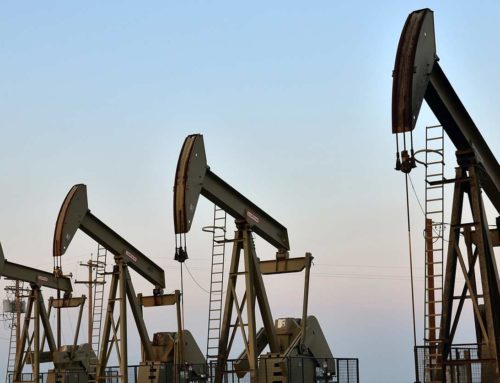
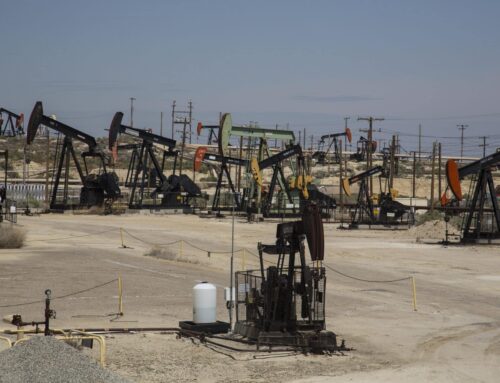








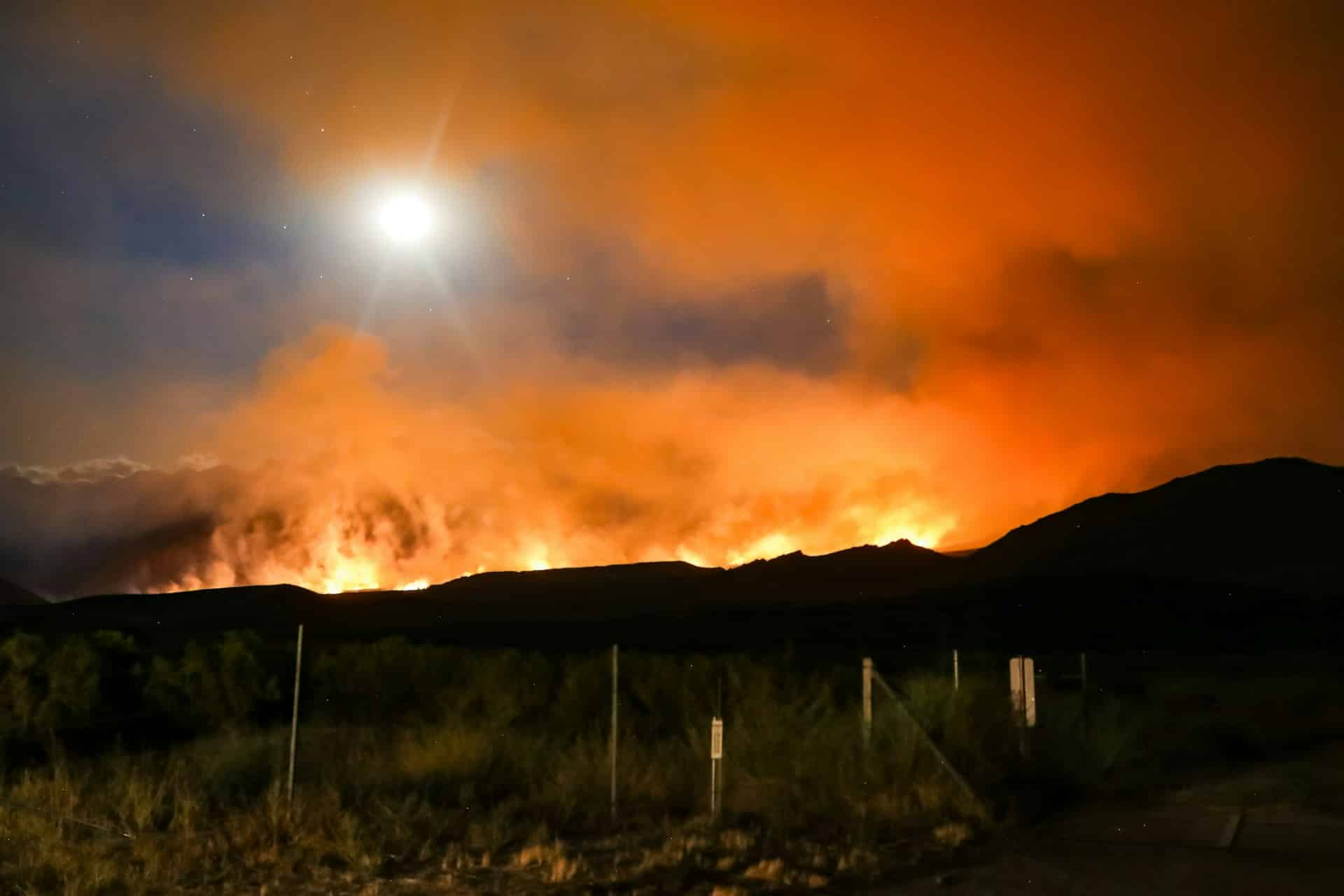
Get Social